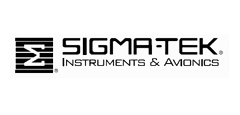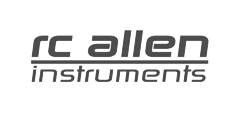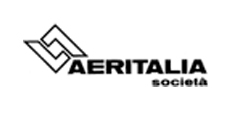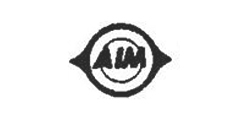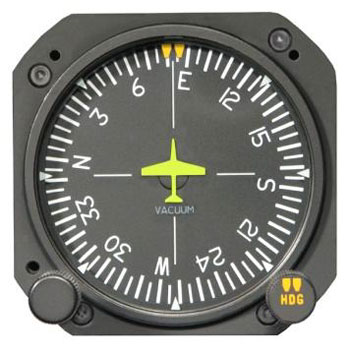Smoking: Nearly all general aviation aircraft vacuum systems draw air from the cabin. Smoking tobacco products will introduce tar residue into the vacuum system.
Central Filter: Change gyro filter every 500 hours and inspect vacuum filter every 100 hours.
Caging attitude gyros: Unlike vacuum gyros electrics take longer to reach a stable speed. Caging was designed to assists electric attitude gyros with erecting in both roll and pitch. To prevent damage to a running attitude gyro from gyroscopic tork forces never attempt to lock caging mechanism.
Aerobatics: Gyroscopes i.e. Turn & Slip, Direction Gyro and Attitude Gyro all have mechanical limitations rendering them unreliable and can damage the instrument during aerobatic maneuvering. To minimize damage to the gyroscopes it is suggested that you remove the gyroscopic energy from the instruments by turning off electric/vacuum power before aerobatic flight. Electric instruments use circuit breaker for vacuum install ball valve.
Panel Tilt: Attitude Gyros may require a calibration for a particular aircraft panel tilt. This can only be done by the manufacture or a qualified repair station. In some situations a wedge adapter plate can be use to match the instrument to the slope of the panel. (see panel tilt examples)
Shakeout: Vacuum Attitude Gyros will do a slight left right up down dance (shakeout) on the initial start up. This is a good sign that the gyroscope is clean and friction free and if it doesn’t shakeout then it may need servicing soon.
Attitude Gyro: Sometimes called Gyro Horizon Indicator is an aircraft flight instruments that provides the pilot with a constant pictorial visual indication of the aircraft’s attitude relative to the earth.
Directional Gyro: The Directional gyro Indicator is an aircraft flight instrument that provides the pilot a visual directional reference for steering straight courses and making precision turns.
Turn & Bank: Known as the Needle and Ball is a horizontally gimbled gyroscope that deflects a needle pointer in the direction and indicates a rate of a turn in the yaw axis. An inclinometer (Ball) gives the pilot slip and skid information.
Turn Coordinator: Know as the Turn & Slip is a 37 to 40 degree horizontally gimbled gyroscope designed to give the pilot an anticipatory indictor of turning by sensing both the rate of roll and yaw. The Turn Coordinator uses a symbolic airplane as its needle reference and like the Turn & Bank has an inclinometer to give the pilot slip and skid information.
Damping: Gyro rate instruments such as turn & banks and turn coordinators use silicone or a mechanical dashpot to dampen the needle movements. Over time silicone will eventually wick out making the instrument too sensitive requiring service.
Vacuum System: The vacuum system is at the present the most economical and reliable means of operating a safe a redundant flight instrument package. Be sure to change your filters regularly. When the vacuum system is maintained properly your gyros will give many years of good service.
Verticality: The vertical and horizontal alignment is important to the in flight operation of the attitude gyro. You can simply check it after starting the aircraft by first allowing time for the attitude gyro to erect level then turn the aircraft 90 degrees. During the turn observe what the attitude gyro is doing, if it goes off more than 3 degrees in pitch or roll then service is recommended.
Need A Packing Slip?
Be sure to send your contact info with your instrument.
CLICK HERE
For a Packing Slip
